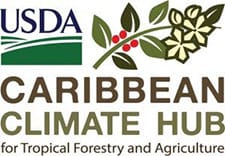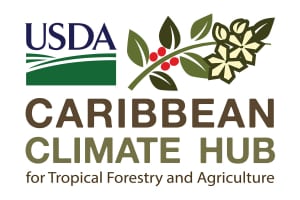Date: 2023
Runtime: 03:47
Language: Spanish with English Subtitles
Watch as farmer Josefina Arce of Finca Atabey in Santa Isabel, Puerto Rico, shares her inspiring journey of planning for long-term resilience in the face of climate change. The video highlights Josefina’s innovative practices, including windbreaks, crop diversity, and drip irrigation, which have helped her adapt to the challenges of unpredictable weather patterns. With support from NRCS and USDA initiatives, Josefina’s story serves as a ray of hope for farmers seeking to thrive in a changing climate.
Finca Atabey | Santa Isabel, Puerto Rico – Long-term planning for climate resilience
Detailed description of conservation practices
Farmers in Puerto Rico and the US Virgin Islands are dealing with challenging conditions due to a variable tropical climate complicated by climate change. Finca Atabey in Santa Isabel, Puerto Rico, led by Josefina Arce, offers a hopeful example of adapting to these conditions.
Finca Atabey grows diverse crops including avocado and eggplants, but faced challenges from prolonged droughts caused by climate change. To tackle this, Josefina’s team sought support from the USDA’s NRCS-Caribbean Area and implemented several strategies. They planted trees to act as wind barriers, increased soil microbiota and installed a drip irrigation system to reduce consumption.
The video featuring their journey is part of the USDA’s Caribbean Climate Hub’s NIFA-funded Climate-Smart Caribbean program, aimed at providing agricultural communities with information on sustainable practices to reduce climate change risks in agriculture.
Practices implemented in Finca Atabey:
- Attract pollinators
- Practice – 148 Pollinator Habitat Design
- FY23_DIA 148_Pollinator Habitat Design and Implementation Activity (usda.gov)
- Tree barriers
- Practice – 380 Windbreak/Shelterbelt Establishment and Renovation
- Conservation Practice Standard Windbreak-Shelterbelt Establishment and Renovation (Code 380) (usda.gov)
- Windbreak-Shelterbelt_Establishment_380_PO.pdf (usda.gov)
- WINBREAK/SHELTERBELT ESTABLISHMENT (usda.gov)
- Drip Irrigation
- Practice – 449 Standar Irrigation Water Management
- Conservation Practice Standard Irrigation Water Management (Code 449) (usda.gov)
- Practice Overview for CPS Irrigation Water Management (Code 449) (usda.gov)
- CONTOUR BUFFER STRIPS (usda.gov)
- Increase soil microbiome
- Practice – 336 Conservation Standar Soil Carbon Amendment
- Conservation Practice Standard Soil Carbon Amendment (Code 336) (usda.gov)
- Practice Overview for CPS Soil Carbon Amendment (Code 336) (usda.gov)
- Conservation Practice Standard Mulching (Code 484) Network Effects Diagram (usda.gov)
- Practice – 116 Soil Health Management Plan
- FY23_CPA 116_Soil Health Management Plan CPA_FY22 (usda.gov)
Video Transcript (English)
My name is Josefina Arce. We are in the Atabey farm in Santa Isabel in Puerto Rico. Our main production is avocado. We have 22 “cuerdas” of Butler avocado and 10 more “cuerdas” of other avocado varieties.
The effect of climate change on the farm is mainly drought. We have had extended periods of drought that bring us problems with irrigation. Not only irrigation, but some of the crops have been affected because the fruit does not grow or deteriorates quickly.
One of the practices we are using on the farm is to attract pollinators and other beneficial insects, such as parasitoid wasps, to help us counteract pests.
Another practice that has been very useful to us with climate change is that we have put tree barriers around the farm. We noticed that during Hurricane Maria, that tree barrier helped us a lot to have less losses than we would have had in the avocado trees because they received a great impact from the winds. We are increasing that practice of putting up more barriers because we believe it is helping us in the face of this new challenge of climate change that we are expecting stronger hurricanes.
NRCS is the agency that has helped us the most with technical advice. When we put in the drip irrigation system, which is helping a lot so that we don’t use excessive amounts of water due to the low rainfall problem in the south, drawing water from the southern aquifer.
The changes that need to be made are long-term changes. For example, one of the things we have to do on the farm, which we are already starting to do, is to increase the soil microbiota. This is something that takes months and can take years in which to create a good microbiome in the soil that improves the texture and can then retain more water and help us in this new challenge of climate change, where we expect that there will be a decrease in the amount of water available.
USDA is an equal opportunity provider, employer and lender. The views and opinions expressed herein do not necessarily state or reflect those of the United States Government. USDA does not necessarily endorse the views expressed in this video.



Follow Us!